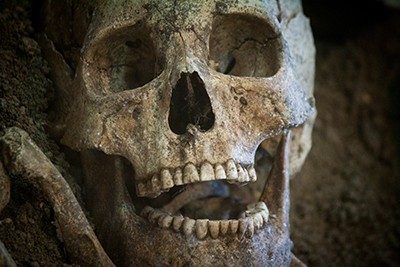FOR IMMEDIATE RELEASE
ACS News Service Weekly PressPac: March 10, 2021
Extracting information from ancient teeth
“Comparing the Use of Magnetic Beads with Ultrafiltration for Ancient Dental Calculus Proteomics”
Journal of Proteome Research
There’s a surprising amount of information stored in the hardened plaque, or calculus, between teeth. And if that calculus belongs to the remains of a person who lived in ancient times, the information could reveal new insights about the past. But the tiny samples can be difficult to work with. Now, in ACS’ Journal of Proteome Research, scientists apply a new method to this analysis, finding more proteins than traditional approaches.
The human mouth is full of interesting molecules: DNA and enzymes in saliva, proteins and lipids from bits of food stuck between teeth, the bacterial citizens of the oral microbiome. Under the right conditions, those molecules can be preserved in dental calculus for thousands of years. Identifying the biomolecules preserved within ancient plaque gives researchers clues about how our ancestors lived, what they ate, what diseases they had and more. However, there’s only so much plaque one can scrape off of old teeth, so it’s important to apply methods that can extract the most information from minuscule samples. Although no gold-standard method for calculus analysis exists, filter-based techniques are often used, but they can be time consuming and can introduce contaminants. So, teams led by Michael Buckley and Cheryl Makarewicz wanted to see whether another method, called single-pot, solid-phase-enhanced sample preparation (SP3), could improve the number and complexity of protein fragments that could be analyzed from preserved plaque.
The researchers, led by Karren Palmer, applied SP3 to the analysis of calculus from 153 ancient individuals dating from between the 1st and 4th century BCE. With SP3, functionalized magnetic beads grabbed onto protein fragments, making them easy to analyze by mass spectrometry. The researchers found that SP3 reliably increased the number of unique protein fragments they could identify in samples, including smaller peptides that two other methods, ultrafiltration and acetone precipitation, missed. SP3 was also easy to perform and less likely to introduce contaminants than the other methods. Using this approach, the researchers identified fragments of dairy proteins from the subjects’ diets, as well as bacterial proteins that could shed light on ancient diseases.
The authors acknowledge funding from the European Research Council and the European Union’s Horizon 2020 research and innovation program.
###
The American Chemical Society (ACS) is a nonprofit organization chartered by the U.S. Congress. ACS’ mission is to advance the broader chemistry enterprise and its practitioners for the benefit of Earth and all its people. The Society is a global leader in promoting excellence in science education and providing access to chemistry-related information and research through its multiple research solutions, peer-reviewed journals, scientific conferences, eBooks and weekly news periodical Chemical & Engineering News. ACS journals are among the most cited, most trusted and most read within the scientific literature; however, ACS itself does not conduct chemical research. As a leader in scientific information solutions, its CAS division partners with global innovators to accelerate breakthroughs by curating, connecting and analyzing the world’s scientific knowledge. ACS’ main offices are in Washington, D.C., and Columbus, Ohio.
To automatically receive press releases from the American Chemical Society, contact newsroom@acs.org.
Note: ACS does not conduct research, but publishes and publicizes peer-reviewed scientific studies.
Media Contact
ACS Newsroom
newsroom@acs.org


